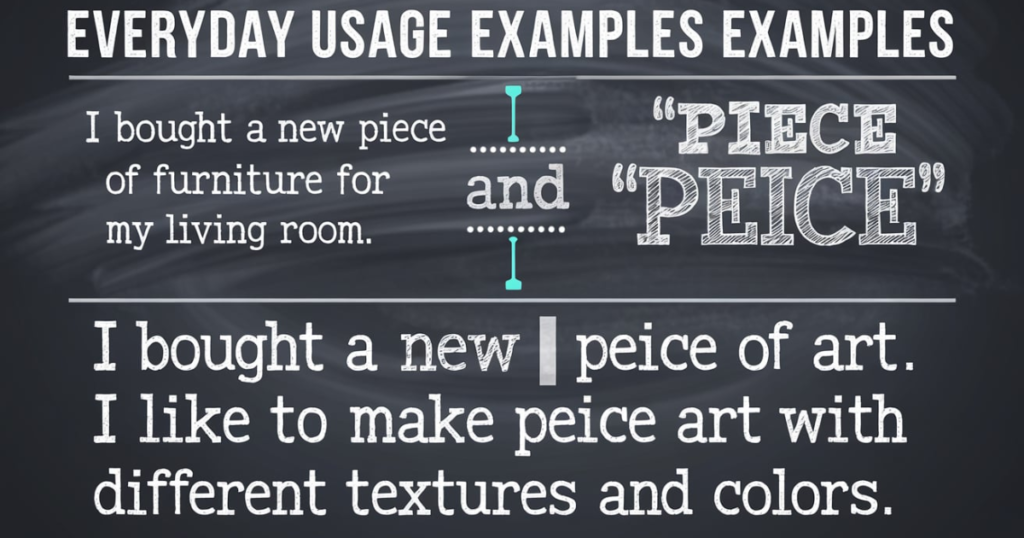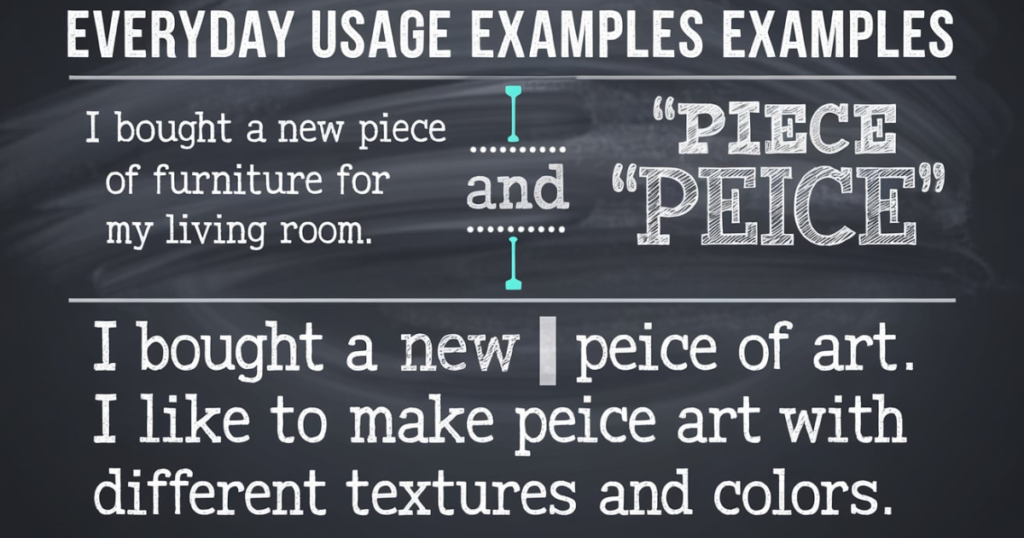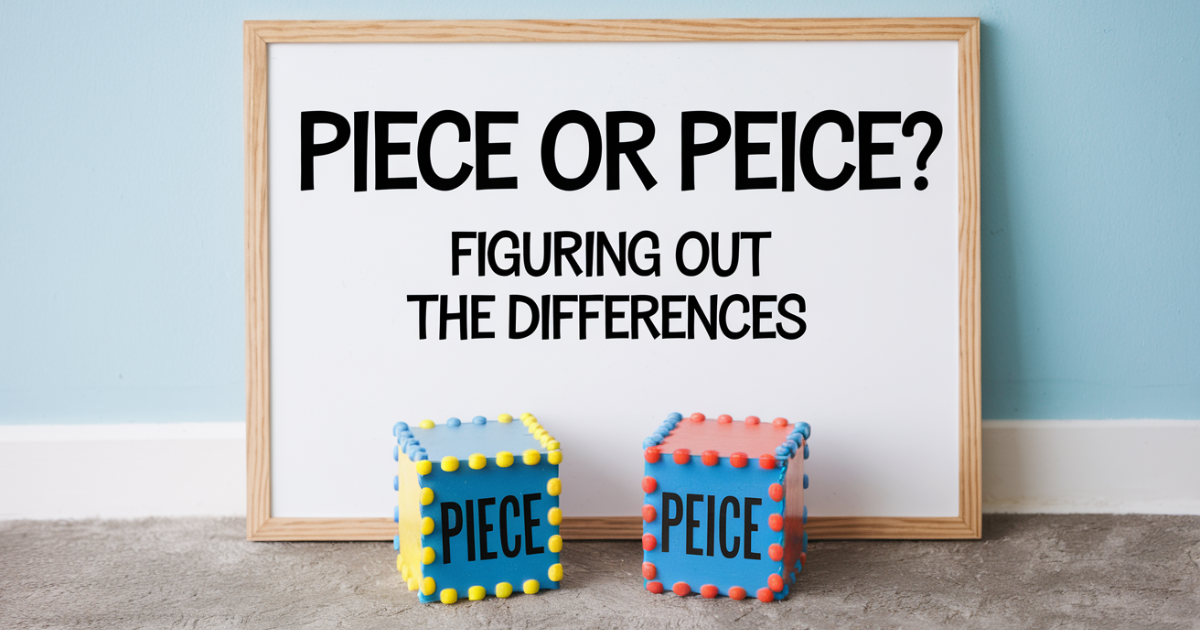Have you ever paused while typing and wondered, “Is it spelled piece or peice?” This common confusion often trips people up, even seasoned writers, due to the similarity in pronunciation and minor spelling difference. But knowing the right spelling can make all the difference in clear communication, especially since “piece” has such a versatile range of meanings, from a part of something to a creative work.
The difference lies in a simple letter arrangement, yet the correct spelling piece follows a rule that helps you remember it: “i” before “e,” except after “c.” This rule will guide you in selecting the right form, so you can avoid spelling mishaps and always use “piece” correctly in writing. Let’s dive into the differences and tips to remember them effortlessly.
Understanding “Piece” and “Peice”\

Piece: Definition and Usage
The word “piece” refers to a portion, section, or segment of a whole. It can describe a physical object, like a piece of cake, or an abstract entity, such as a piece of information. “Piece” is also commonly used in artistic contexts to refer to creations like a piece of music or art.
Knowing the correct spelling helps ensure clarity, especially since it’s widely used across various situations.
Examples
- She offered him a piece of her chocolate bar as a kind gesture.
- The artist completed a beautiful piece of work that was displayed in the gallery.
You Also Like To Read This: Sueing or Suing? Choose The Right Term
Peice: Common Misuse
“Peice” is a common misspelling of the word “piece.” This error often happens because of the reversal of the letters “i” and “e.” Remembering the rule “i before e, except after c” can help prevent this mistake, keeping your writing clear and correct.
Side-by-Side Comparison
| Correct Term | Incorrect Term | Meaning | Example | Key Difference |
| Piece | Peice | A portion, segment, or part of a whole | She took a piece of cake from the table. | “Piece” is the correct spelling; follows “i before e.” |
| Piece | Peice | A work of art or music | The musician composed a beautiful piece of music. | The correct spelling, “piece,” is widely accepted. |
| Piece | Peice | A part of information or item | Can I have a piece of advice? | “Peice” is incorrect and does not follow spelling rules. |
Everyday Usage Examples

For “Piece”
- Can I have a piece of that cake?
- She wrote a beautiful piece for the school newspaper.
- Each piece of the puzzle was unique and colorful.
- He offered her a piece of advice before the interview.
- The artwork was a stunning piece that captivated the audience.
- She lost a small piece of her necklace.
- The mechanic replaced a broken piece in the engine.
FAQs
What is the correct spelling: piece or peice?
The correct spelling is “piece.” “Peice” is a common misspelling.
Is peice a real word?
No, “peice” is not a real word in English; it’s simply a spelling error.
Why do people often misspell “piece” as “peice”?
People often reverse the “i” and “e” in “piece” because it doesn’t follow the typical “i before e, except after c” rule.
Is “peice” a valid alternative spelling for “piece”?
No, “peice” is not a recognized alternative spelling for “piece.”
What is the origin of the word “piece”?
The word “piece” comes from the Old French word piece, which originally meant a portion or part.
Conclusion
In summary, understanding the correct spelling and usage of “piece” is essential for clear communication. Though “peice” is a common mistake, remembering simple spelling rules can help avoid this error. “Piece” is a versatile word with many meanings, from parts of an object to creative works.
Knowing the word’s origin and common misspelling helps reinforce proper usage. By focusing on spelling accuracy, you can confidently use “piece” in all your writing.

Grammerlytips.com, authored by Jame, offers expert tips and insights on mastering grammar, enhancing writing skills, and boosting communication effectiveness.

